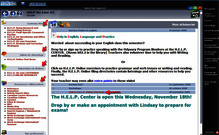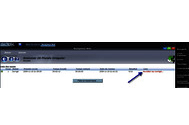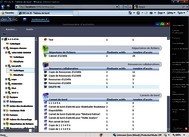Virtual Component of an ESL HELP Center
Created in 1998, H.E.L.P. On-Line (Help in English; Learning and Practice Online) was the result of the complementary desires to get the maximum benefit of new technologies for our students and to give them the best resources possible. Created to satisfy the ministerial objectives for English as a Second Language by the professors at Cégep de Jonquiere, this resource allows students to actively and autonomously participate in their own learning process while meeting the individual pedagogical needs of its developers.
Now in its 11th year of operation, H.E.L.P. On-Line, has weathered major changes over the last three years going to DECclic and then to DECclic II where it has remained since 2007. H.E.L.P. On-Line is a learning object repository which currently contains more than 200 English grammar exercises, several web pages, interactive crosswords and reference tools or links to outside resources which are accessible to all regular students registered in an English course as they are manually registered into the H.E.L.P. On-Line activity in DECclic II by the person in charge of the service.

Home page

Section selection

Exercise selection
All students of English have 24/7 access to these resources. The site is both an individual resource and a classroom tool. The individual student is in control of their own learning process and can use the resource to solidify the concepts covered in the course using self-correcting interactive grammar exercises and general reference documents in both written and audio formats. Furthermore, with DECclic II’s learning management system, teachers can follow each of their registered students’ activities and progress in using the various resources.

The Student View of an Exercise

Instructor’s Statistics

New Global Statistics Page
Initially, it was difficult for us to get statistics on visits because the tracking function in DECclic II was incomplete. We couldn’t generate user statistics for all groups registered, as this information was available to teachers and coordination only on a per group basis. There was a need to generate comparative statistics based on the totality of groups registered in the H.E.L.P. On-Line activity. This function has now been integrated into DECclic II, and we are in a position to generate use statistics for each learning object in order to better meet the needs of our students.
2010 Project Objectives
The 135 learning objects and evaluations were for the most part exercises built with EXAM STUDIO. Cognizant of the fact that this type of exercise was effective for basic linguistic concepts, we researched ways of delivering more sophisticated concepts in second language instruction involving analysis and synthesis. In order to enhance learning, we also realized that these activities had to appeal to several senses which seemed to indicate a multimodal approach.
It is important to remember that interactive learning strategies such as ours offer several pedagogical advantages when presented in a multimedia format. Among other factors, they offer the following advantages:
- Multiple modalities to conform to different learning styles (Greenfield, in Berger, Pezdez and Banks, 1987);
- Accelerated language acquisition and improved knowledge integration (Jonassen, 1988; Roblyer, 1988; Shank, 2002);
- Response stimulation, development and encouragement as well as immediate feedback (Wager, 1988) results in more interesting, motivating and efficient activities (Salisbury, 1988; Shank, 2002).
Furthermore, the most appreciated factors according to Giardina (1992) were as follows:
For Students
- The ability to progress at their own speed,
- The perception of being evaluated more objectively,
- The presence of effective feedback from the computer at all times,
- The ability to err repeatedly without guilt.
Clark (1983) indicated that for certain students the ability to repeat certain exercises and passages helped to diminish stress,
For Teachers
- To relieve repetitive aspects of teaching,
- To respond to individual needs,
- To identify student weaknesses through the registration of responses.
For administrators, the following criteria were definite advantages in evaluating the acquisition of such a system:
- The relationship of quality to price,
- The stability of the subject material,
- The ability to update content,
- Full time accessibility
Are you using the type of system to teach English in your school? If not, what do you use? Why not use our Comments section to share your views with colleagues!

